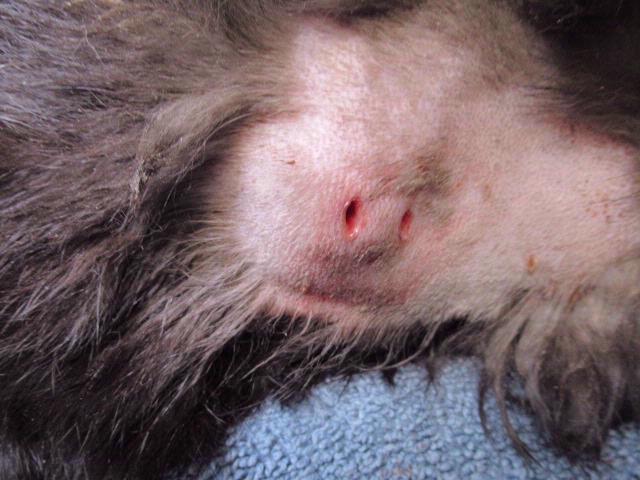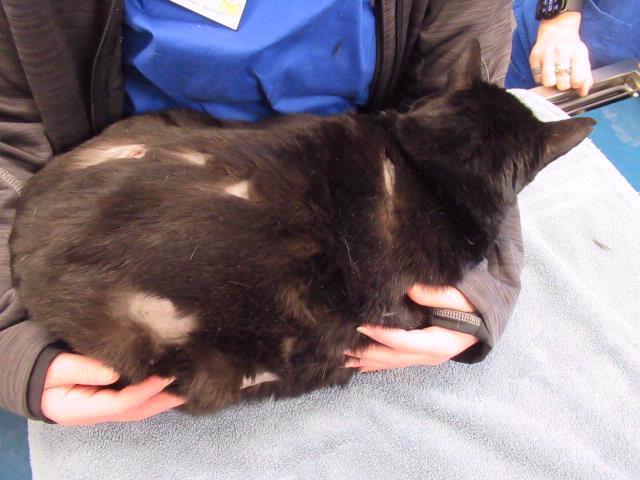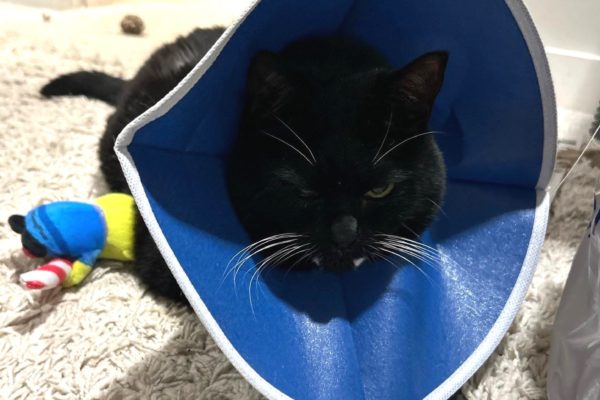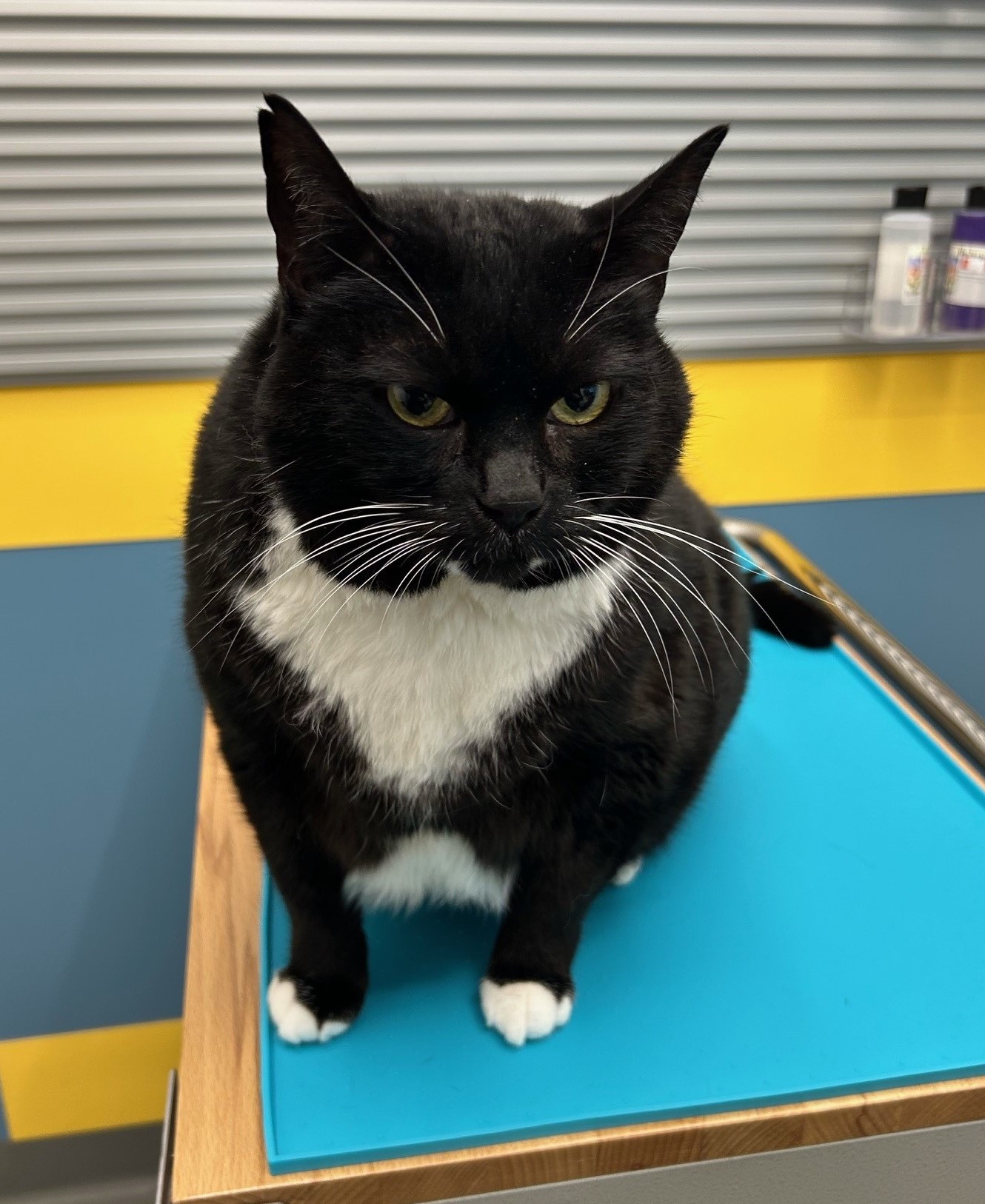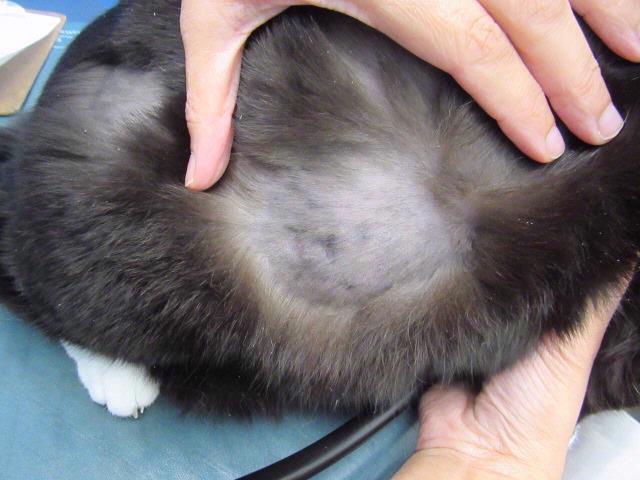
Rufus, who is a very funny cat, is our first pet of the month for 2024. He loves playing with newspapers, laying on his big (dog) bed, and going on walks around the block! He does not like citrus, so much so that if we eat an orange and then prepare his breakfast, he won’t eat his breakfast! He also does not like belly rubs or when his sister is laying in his spot.
Rufus is a very smart kitty, and he used to find ways to wake people up when they were sleeping by going to parts of the house that echoed loudly and meowing or places where he could knock things over, thankfully he doesn’t do that anymore!
Dr. Kaur saw Rufus at the end of the last month for not eating and acting lethargic. As per Rufus’s owner, he was recently seen by an urgent care facility for similar symptoms and a lump, or swelling, on his flank region. At the urgent care they noted the swelling was firm and he had an elevated body temperature. Fine needle aspirate sample of the lump was taken and he was started on antibiotics; warm compresses at home were recommended by the urgent care veterinarian.
The next day we saw Rufus, the lump was still present along with the fever. It was noted the swelling had small skin wounds that appeared to scab over. Rufus was sensitive to touching the area but he still allowed examination. We also found there were other multiple small wounds on his back and neck. Rufus is an indoor/outdoor cat. So based on the symptoms and clinical findings, an abscess due to bite wound was suspected and lancing the abscess under sedation was recommended.
Feline abscesses are the painful accumulation of the pus within the cavity under the skin. Abscess can develop after the skin is punctured or scratched by other cats or animals. Both claws and teeth carry significant amounts of bacteria. The abscess forms when bacteria enter deeper tissue and establishes an infection. With time, the infection continues to grow, inflammatory cells liquify to pus increasing pressure, which erodes the overlying skin. Eventually, the skin may open and release pus and infected material.
The cats are often presented to the hospital for a rapidly appearing, painful swelling. The skin involved may be tender, fragile, red, and oftentimes a healed over a skin wound is present. Cat abscesses are sometimes difficult to locate and owners may bring their cats to the vet for not eating, hiding, acting listless, and limping. The common areas to develop an abscess are face, ventral neck, tail, shoulder, trunk, and limbs; sites commonly bitten or scratching during fighting. It is very important for every cat to have a thorough examination by a veterinarian if you notice any symptoms, as cat bite wounds may be deeper than they initially appear. Also, most of the time we do not have much information about the confrontations of outdoor cats with other animals, and there could be other injuries present.
Abscess treatment involves minor surgery performed as an outpatient procedure. The goal of surgery is to establish and maintain drainage, as well as remove any nidus of infection or foreign material.
Rufus was sedated for the procedure and the area was shaved. This allowed a more thorough examination of the swelling. On palpating the swelling, it appeared to be firmer than what we would expect for a pus-filled cavity and raised the suspicion for soft tissue infection ( cellulitis ) or possibly a skin tumor that might be infected. Typically, the diagnosis of abscessation in cats who have a history of going outside, is very straightforward and no additional diagnostics such as sampling of the swelling or discharge is indicated. However, as Rufus’s swelling was a firm lump, proceeding with a fine needle aspirate and cytology was advised at the urgent care facility; results were pending.
The stab incision to drain the pus was made in the most soft area. Initially no fluid came. When we checked for pockets of pus only then we were able to get pus out from one area which was deeper. The cavity was drained and flushed multiple times with mild antiseptic solution. The other wounds were also shaved and examined for infection. Fortunately, all the other skin wounds were superficial with no evidence of infection.
Most of the time, lancing and draining is all that you need to treat the abscess. In some cases, particularly large cavities, a rubber drain tube is placed to keep the abscess open and draining. This tube is removed within 3-4 days. Antibiotics are often used in addition to drainage. Antibiotics alone are not sufficient as they do not penetrate the walled off abscess and the environment inside the abscess hinders the working of antibiotics. Rufus was having a lot of soft tissue inflammation so it was decided to continue the antibiotics until the next recheck in a few days. He was sent home with anti-inflammatory medications and a head cone to prevent him from the licking of the area. We also applied a transdermal medication that works for 4 days to address his pain. We advised Rufus’s owners to provide warm compresses at home as the heat helps bring in the blood supply and softens diseased tissues so that they can drain.
In two weeks when we saw Rufus for recheck his swelling was completely gone and he was back to his normal happy self. By the time we had also received results of the cytology which were consistent with the abscess which was good news. We must end this article by saying Rufus was very brave to handle everything.

